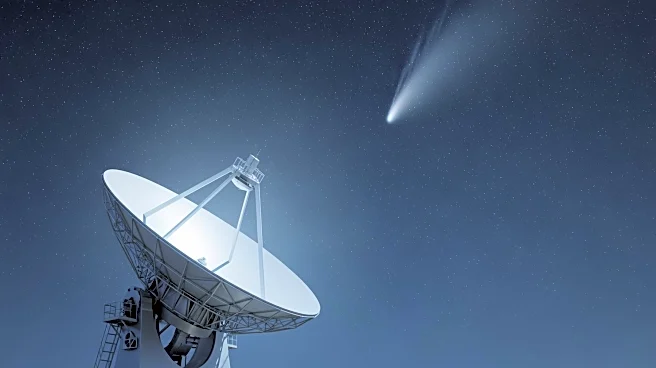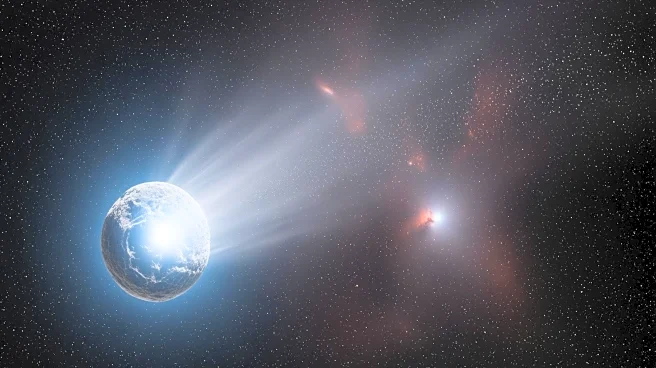What's Happening?
Recent scientific research has provided new insights into the origin of Theia, the Mars-sized planet that collided with Earth approximately 4.5 billion years ago, leading to the formation of the Moon.
By analyzing the chemical composition of lunar samples, terrestrial rocks, and meteorites, researchers have determined that Theia likely originated from the inner solar system. This discovery sheds light on the early solar system dynamics and the processes that led to the formation of the Moon, which plays a crucial role in Earth's habitability.
Why It's Important?
Understanding the origin of Theia and its collision with Earth is vital for comprehending the formation of the Moon, which has significant implications for Earth's climate and life. The Moon's gravitational influence stabilizes Earth's axial tilt, affecting climate patterns and enabling a stable environment for life to evolve. This research contributes to the broader understanding of planetary formation and the conditions necessary for life. It also highlights the interconnectedness of celestial events and their impact on Earth's development.












